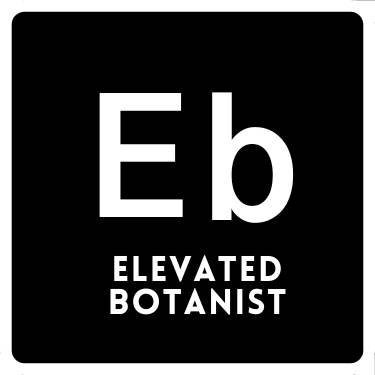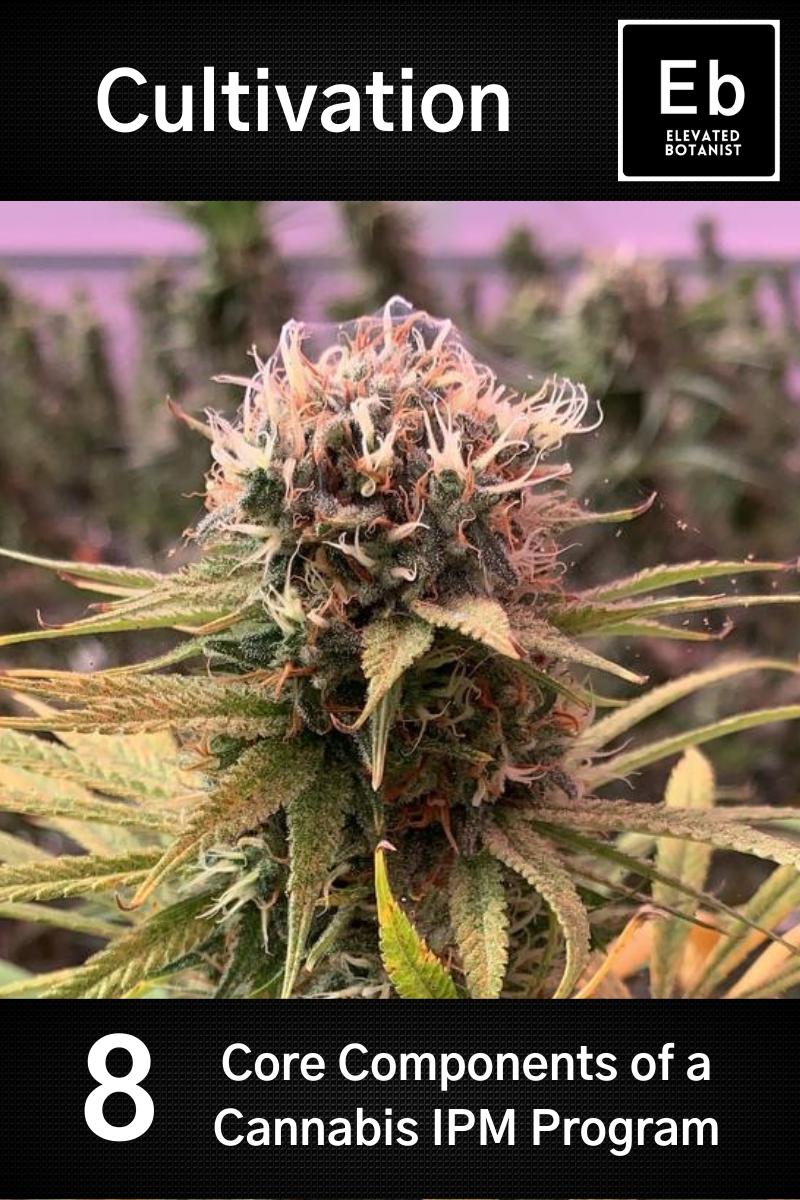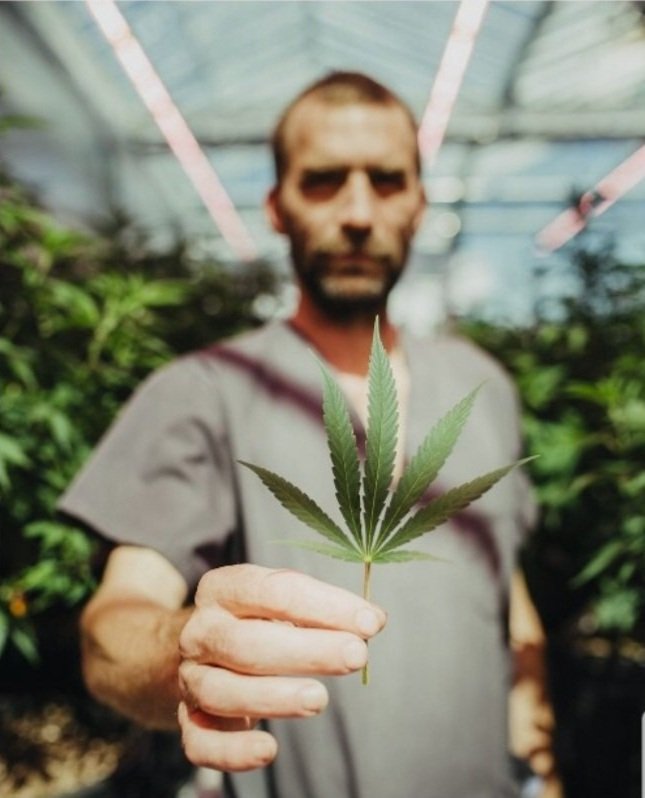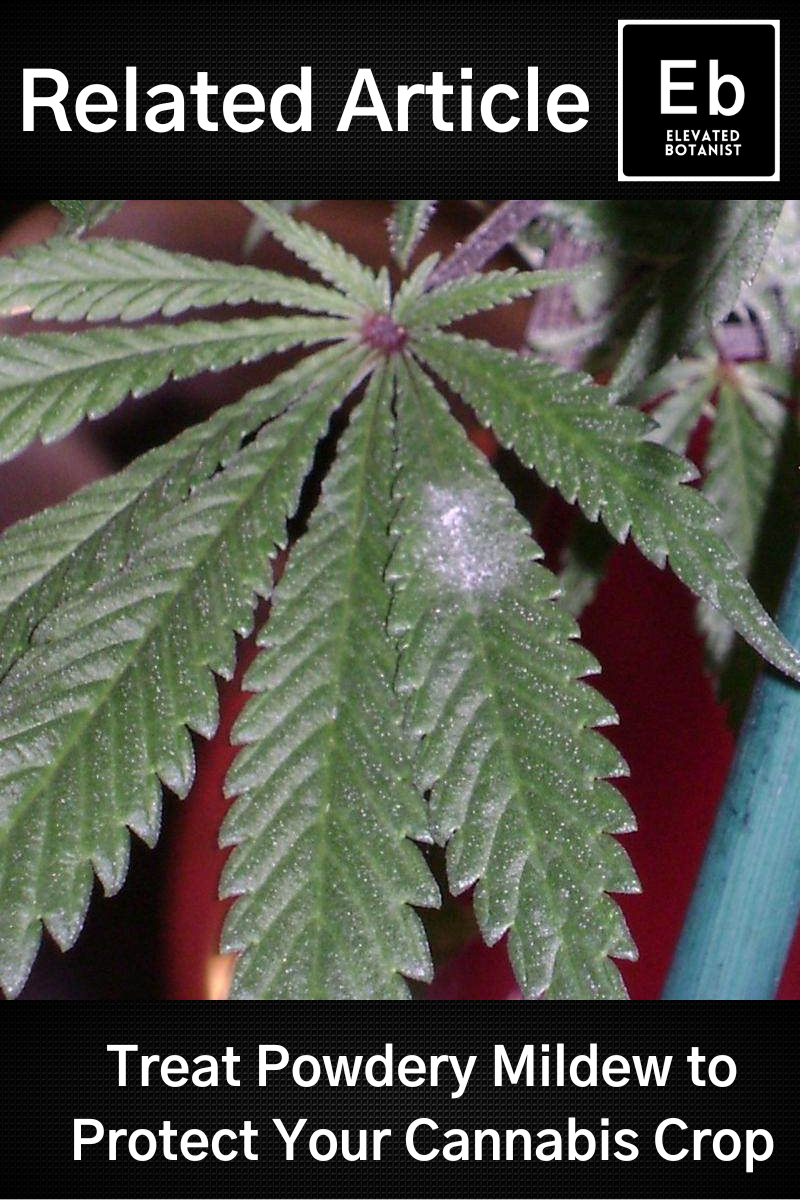8 Core Components of a Cannabis IPM Program
Integrated Pest Management (IPM) programs are holistic systems to manage pest pressures below the threshold of economic damage.
The world is a dangerous place for cannabis plants.
Like other high-density crops, cannabis is susceptible to pestilence and disease, particularly during the late flowering stage.
In contrast to conventional crops, most systemic pesticides are prohibited for use on cannabis.
Many growers have faced financial ruin due to catastrophic crop loss.
Fortunately, it is possible to manage pest pressures, and produce clean compliant cannabis without the use of systemic pesticides.
To achieve this goal, growers need to use every tool in the box.
IPM programs will vary depending on region and method of production, but most will share these eight core components.
The 8 Core IPM Components:
1) Prevention:
2) Genetic Resistance:
3) Continuity:
4) Observation:
5) Biological controls:
6) Chemical Controls:
7) Climate Management:
8) Mechanical Controls:
1) Prevention:
The first component of IPM is prevention. Prevention includes biosecurity and quarantine practices to exclude pathogens and pests from protected cultivation areas. There are several ways that pests can enter cultivation areas.
Personnel:
The movement of personnel are an obvious entry point for undesirable hitchhikers.
Common biosecurity measures to limit human vectoring (spread) of plant pathogens include tool and surface sanitation, and personnel hygiene and clothing practices.
All personnel should be trained in biosecurity protocols, and aware that they are not to report to work directly after visiting other farms or cultivation areas.
Visitors are provided with sanitary garb and instructed in appropriate procedures to enable site biosecurity.
Showers are generally provided for personnel and clean scrubs, or clothing covers (bunny suits) are required to enter production areas.
Staff usually keep a dedicated pair of shoes on site, that are only worn in production areas, and are sanitized frequently. Gloves are often mandated, but studies have shown frequent handwashing to be more effective in avoiding cross-contamination.
Footbaths containing sanitizing solution are located at entrances to minimize contamination between grow areas. Dedicated horticulture, and sanitation tools are kept in each production area, and sanitized as per Standard Operating Procedures (SOPs).
All surfaces within cultivation areas are sanitized on a schedule, and a deep cleaning is performed following each crop cycle.
Endemic, or existing pressures
Most farmers don’t have the luxury of beginning operations in a brand new, sterile facility.
Any area that has been previously used for agriculture of any type should be assumed to have pests established in the infrastructure.
Some pathogens, like Botrytis cinerea, which is responsible for grey mold disease, are universally present, and will reproduce whenever environmental conditions favor disease development.
B Cinerea is present everywhere from Amazon rainforest to Arctic tundra.
It lurks on the keyboard that I write this missive on and drifts in the air that you breathe as you read it.
Environment
Pests and Pathogens are often present in the outside environment and can enter cultivation areas where they may find a protected niche to infest.
Air exchange should be controlled and filtered to minimize this possibility.
Many indoor facilities operate within sealed environments, and pathogens can be very effectively excluded by air lock, and air filtration practices. Air filtration usually involves a two-step system where a filter of MERV-13 rating or better is used to remove particulates. The second step is a downstream uvc treatment to kill any spores that remain in the air column.
In greenhouses, which require high rates of air exchange to manage climate factors, the complete exclusion of airborne pathogens through air filtration is unrealistic.
Other possible vectors from the outside environment include flying insects, and ants which will bring aphids into a facility to farm them.
Plant Vectors
The most common cause of pest introduction to cannabis production environments is the importation of live plants.
Some plant pests can be very difficult to diagnose and eliminate, even with rigorous quarantine procedures, so best practice entails not bringing live plants into a clean facility.
It is much safer to bring in biological starting materials in the form of seeds, or as plantlets.
Plantlets are plants which have been cultured within in vitro (in glass) sterile environments.
This process is effective in excluding pathogens, and in some cases can be used to eliminate plant viruses.
2) Genetic Resistance:
Cannabis cultivars differ greatly in their evolved resistance to various pests. Selecting cultivars with high resistance to the pest pressures that are present in the production environment is crucial.
Healthy plants are best able to fend off pathogens, and good horticultural practices are a baseline for any IPM program.
In some cases, genetic resistance can offer strong protection against pest pressures that are otherwise very difficult to manage. Notably, a cannabis resistance gene has been recently discovered that imparts total immunity to the Golovinomyces ambrosiae pathogen responsible for many Powdery Mildew infections.
This discovery has the potential to eliminate billions of dollars in crop loss to this prevalent disease. Discovery of genetic resistance is not limited to research laboratories.
Large scale cultivators would be wise to continually trial cultivars to establish fitness for production in their environments.
3) Continuity:
An important principal of successful IPM programs is continuity of care. From creation to post-harvest, all plants need to be continually managed to keep pest pressures at the lowest possible level.
Cuttings should always be taken from vigorous, healthy mother stock. The cloning process usually involves humidity, temperature, and stagnant air conditions which favor fungal pathogen establishment.
Unless cloning directly into a suppressive soil, bioprotectants should be considered as a drench for rooting media.
Several organisms, including Bacillus subtilis, Streptomyces lydicus, and Tricoderma harzianum have shown efficacy in suppression of fungal pathogens, and are available in branded formulations.
For organic growers, a balanced and diverse soil microbial community plays an important role in pathogen suppression.
Cultural controls, particularly those impacting soil air to water ratios, are central to favoring these communities.
Within the rhizosphere, or root zone, these suppressive biota function primarily through competition, parasitism, and the production of pathogen-suppressing compounds.
Care is taken when moving plants between locations within a production facility.
Young plants can be effectively treated with sprays or dips to ensure full coverage of all plant surfaces.
Beneficial predator populations can be established on young plants.
As plants enter later developmental stages, pest management options narrow, so early and aggressive treatments are recommended.
4) Observation:
Observation is a central component of pest management programs. All crop workers should be trained to recognize pest damage, and to report disease conditions to IPM specialists.
All production crops should be thoroughly scouted at least once per week by skilled personnel. Pest maps are used to detail the identity and intensity of all pest populations so that biological releases and other treatments can be effectively targeted.
Yellow sticky cards are used to attract, trap, and count pests.
The number of pests in each quadrant can be counted and recorded to determine if pest pressures are increasing.
Scouts will sometimes place a white paper under a plant and shake it vigorously to see what insects are dislodged.
Pest pressures are usually scored on a well-defined 1-5 severity ratio based on plant damage, and visible pest presence.
Pest maps are posted in production areas, where they are visible to all personnel, and daily crop work proceeds from areas of lowest to highest pest pressure to limit human vectoring of pests and pathogens.
A loupe or microscope are also sometimes required to diagnose pest issues.
Many arachnid pests, are not visible without magnification.
Several aphid species colonize cannabis and correct identification can aid selection of parasitic wasps for the target species.
Biocontrol specialists can sometimes aid in pest identification.
Magnified video clips are superior to still images for species identification.
The best scouts are observant, experienced, and curious.
When a new or unknown pest pressure emerges, it is important to quickly diagnose and identify the problem.
5) Biological controls:
Releasing insect and mite predators into crops are one of the most efficient ways to control herbivore pests without the use of chemical pesticides.
Biological controls are commercially available in various formats based on their lifecycle, and distribution requirements. Pests have few defenses to these natural enemies.
Following transplant, beneficial nematodes can be watered in, and Hypoaspis mites (Strateolaelaps scimitus) broadcast on the soil surface in a bulk format. These biocontrol agents are great at managing fungus gnats, thrips, and other pests, at their larval stages within the plant rhizosphere, or root zone.
These targeted pests may not cause direct economic damage in Cannabis but can serve as vectors for other pathogens.
During vegetative plant development, Neoseiulus fallacis, Phytoseilulus persimilis, and other predatory mites are deployed for control of arachnid pests.
These Bios are usually applied in the foliage within a bulk vermiculite carrier.
Green lacewing larvae (Crysopa carnera) can be broadcast in the foliage to target aphids, and other herbivore pests.
Adult females will deposit eggs in locations of high aphid populations to ensure a food source for their emergent larvae.
Slow-release sachets containing generalist predators such as Neoseiulus californicas, and Amblysius swirskii, provide a continuous and efficient release of predators once the canopy has closed.
These sachets contain predators at various life stages which emerge gradually over a period of several weeks.
When plants enter the flowering stage, bulk carriers can no longer be broadcast on foliage due to the risk of flower contamination. Small boxes or cups can be hung in the trellis to contain these bulk predator releases.
Phytoseiulus persimilis can be a particularly effective Bio Predator to control spider mite “hot spots” or areas of elevated pest pressure due to its single-minded voracity.
This predator has evolved to devour spider mites at all life stages. Predator populations will quickly crash if spider mites are not available to consume.
Dense trichomes can hinder movement by predatory mites, and larger bodied bios like Stethorus punctum, and Feltiella acarisuga are sometimes released in late flower.
Parasitic wasps, and hoverflies can also serve as effective aphid controls in these conditions.
Deployment of biological predators requires active management and assessment. The timing, species, and method of release will vary depending on the specifics of the environmental niche they are deployed into.
Issues of intraguild, and non-target predation, and the life cycle, climate, and feeding characteristics of biocontrols and targeted pests must all be carefully considered and monitored.
Your beneficial insect supplier can provide detailed information as to treatments that are most likely to be effective in your area and may visit your cultivation facility to provide site specific recommendations.
For outdoor cultivators, the release of beneficial bios can be un-economical and impractical if appropriate habitat is not available. It is often more efficient to take an ecological approach, and optimize conditions for the establishment of indigenous predators through companion planting.
6) Chemical Controls:
Responsible use of Pest Control Products (PCPs) is of critical importance for cannabis cultivators and consumers. Smokable flowers cannot be rinsed before use, and some chemical compounds become more hazardous to humans when combusted. These factors render many chemical controls used in other crops inappropriate for use on Cannabis.
It is your responsibility to ensure that only pesticides that have been registered for use on Cannabis in your jurisdiction are applied to your crop. A pesticide label is a legal document, and all requirements must be followed to ensure safety of product, and personnel.
Pest control products that are permitted for use on cannabis are often very similar to those approved for use in organic agriculture.
Systemic chemical pesticides are generally not permitted, so a sharp focus on efficient spray coverage is necessary for contact killers to be effective.
Spray applications also have a plant photosynthetic cost. When overapplied, sprays can form a residue on leaf surfaces, limiting light capture and clogging stomata.
Horticultural Oils and Soaps can effectively knockdown a broad range of Cannabis pests. These products are also detrimental to many Biocontrol species. Horticultural oils should never be used in conjunction with Sulphur due to plant toxicity issues.
The first reported use of Sulphur as a pesticide dates back 4500 years to the Sumerians.
It continues to be an effective fungicide as resistance is difficult to acquire due to its complex mode of action.
Sulphur is most practically applied through vaporization, and should be employed sparingly, as overuse can hinder plant health and the establishment of biological predators.
Potassium Bicarbonate sprays can be effective at suppression of PM but should not be tank mixed with other products due to their mode of action as a strong base.
Extract of the giant knotweed plant (Reynoutria sachalinensis) is effective at promoting plant immune responses and can often be tank mixed with other bioprotectants.
Effective application of sprayed Pest Control Products (PCPs) requires trained personnel and appropriate equipment. Factors including droplet size, air movement, and canopy penetration will determine the success of these treatments.
7) Climate Control:
Successful cultivation requires climate conditions that are beneficial to plant performance without favoring pest and pathogen establishment.
Within Controlled Environmental Agriculture (CEA) facilities, airflow, humidity, and temperature must be managed to suppress pathogens and pests, and to promote predator and bioprotectant viability.
Efficient airflow equalizes the grow climate and eliminates turbulence and stagnant air conditions which favor establishment of Powdery Mildew disease. Airflow enables Sulfur vaporization and spray operations to efficiently coat the crop and benefits photosynthetic efficiency.
Air movement within cultivation environments is optimized through the establishment of Horizontal Air Flow (HAF) cells.
Factors affecting airflow efficiency include location and orientation of air movement equipment, velocity of air being moved, and physical barriers that increase drag.
Cannabis has a horizontally biased canopy relative to vine crops, and air movement below the canopy is necessary to establish smooth airflow cells.
As cannabis flowers develop, spray operations are no longer indicated. Some products are approved to spray in late flower, but spraying flowering plants can cause elevated humidity within the flowers, increasing the possibility of Botrytis establishment.
As floral expansion progresses, humidity becomes harder to manage for many facilities.
The onset of senescence promotes the establishment of saprophytes, and necrotrophs, which have evolved to infect dying plant material.
The lower Relative Humidity required to suppress mold during late flower can be detrimental to Bio Predators and can shorten the reproduction cycle for spider mites.
In the final few weeks of flower, climate management is one of the few tools available to limit the spread of pathogens, and climate management strategy shifts from optimization of photosynthesis to minimization of disease.
8) Mechanical Controls:
Mechanical pest controls include canopy management, physical barriers, and pest removal.
Regular pruning improves air movement through the foliage and allows for optimal penetration of spray and UVC light treatments. The use of geotextile or plastic covers on growing media can greatly reduce fungus gnat populations which often explode 6-10 days post-transplant.
Sticky cards are used to assess pest pressures and sometimes to reduce them.
Trap plants can also serve as a type of mechanical control.
Bean plants are highly desirable habitat for spider mites, and can serve as an early indicator of pest pressure as well as for physical pest removal.
Banker plants can also be utilized to provide habitat and pollen sustenance for bio predators.
Banker and trap plants should always be propagated on-site, and care must be taken to ensure that species are chosen that will not serve as a vector for other pests.
Outdoor cultivators often rely on physical barriers to exclude pests including ungulates, rodents, and teenagers.
Slugs can devastate young seedlings but can be effectively curtailed with copper barriers.
Late flower is a stressful period for many cultivators.
In addition to humidity management, the use of UVC light is one of the few effective treatments to suppress fungal pathogen spread.
Light treatments can be manually applied or automated with spray booms or robots.
In addition to suppressing fungal pathogens, UVC light treatments during late flower help to minimize the microbial counts prior to the flower entering post-harvest processing.
Management of pest pressures is an existential challenge for cannabis cultivators. Production of cannabis in all environments must be carefully monitored to provide a safe and compliant product with limited chemical interventions.
An intelligent Integrated Pest Management Program is critical to this outcome.















